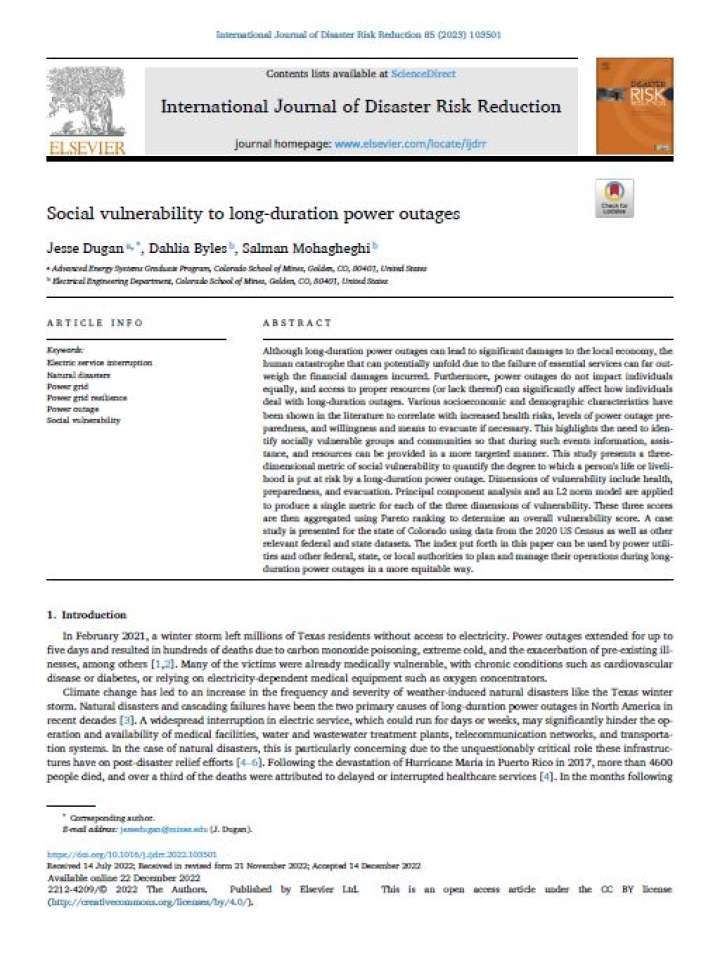Social vulnerability to long-duration power outages
This study presents a three-dimensional metric of social vulnerability to quantify the degree to which a person's life or livelihood is put at risk by a long-duration power outage. Dimensions of vulnerability include health, preparedness, and evacuation. Although long-duration power outages can lead to significant damages to the local economy, the human catastrophe that can potentially unfold due to the failure of essential services can far outweigh the financial damages incurred. Furthermore, power outages do not impact individuals equally, and access to proper resources (or lack thereof) can significantly affect how individuals deal with long-duration outages.
Principal component analysis and an L2 norm model are applied to produce a single metric for each of the three dimensions of vulnerability. These three scores are then aggregated using Pareto ranking to determine an overall vulnerability score. A case study is presented for the state of Colorado using data from the 2020 US Census as well as other relevant federal and state datasets. The index put forth in this paper can be used by power utilities and other federal, state, or local authorities to plan and manage their operations during long-duration power outages in a more equitable way.
Explore further
